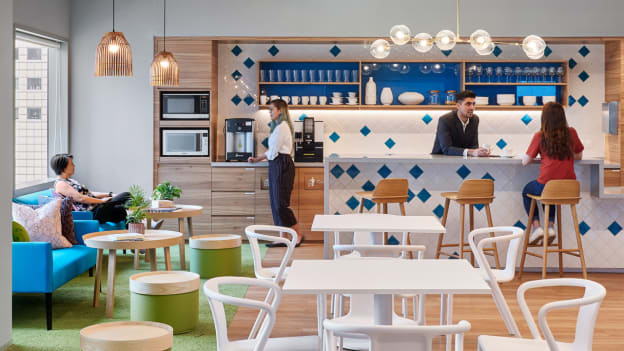Rethinking equity in the workplace

With the death of George Floyd at the hands of the police in the US and the subsequent repercussions felt all around the world, the urgency to rethink the state of diversity, equity and inclusion in our spaces has never been higher.
Over the last six or seven months many of us have been stuck in this forced work from home (WFH) social experiment and there have been extensive discussions about the future of work, home working and hybrid working during this time. There have been many benefits of WFH and many indicators are pointing to a hybrid future where most staff will work some days a week from the office and some from home.
But, not all homes are equal. Many homes do not have strong internet access, enough space for a work desk, ergonomic chairs, conducive environmental factors, or just enough silence.
Like school, in many ways the workplace is an equalizer. Yes, there are hierarchies at play, but all staff are in a shared space with facilities designed and built to suit the work that they need to do.
In a hybrid future where staff come into the office for 2 to 3 days in the week, the overlap time for staff in the workplace potentially drops, which means we need our workplaces to work harder at being more equal to support all staff.
To this end, we believe there are a few key opportunities for workplaces.
Triggered interactions
In the hybrid world of the future and the reduction of potential ‘water-cooler moments’, we need the workplace to curate collisions amongst staff that are unlikely buddies.
Imagine an app that prompts you to meet 5 new people in the office for lunch that you had not met previously. An office app that is curating diverse profiles across hierarchy, ethnicity, race, gender and sexual orientation to meet socially. These triggered connections could be made for book clubs, affinity groups and other safe spaces that the office of the future hosts to truly allow employees to interact and understand each other. And eventually, familiarity with others you work with outside of your social or racial circle will allow all employees to feel like they can bring their authentic selves to work.
Shared workplace for all
When employees are coming to the office only 2 or 3 days a week, there is a real opportunity to challenge the spatial hierarchy of the workplace of the future. Instead of offices for managers and desks for the rest, each staff member gets to choose the working environment in which they want to work for the day depending on the activities to be done. It could be a desk, a quiet space for focused work, an office for confidential discussions or a meeting room.
The coffee corner offers the opportunity for spontaneous exchanges with colleagues and central service points for office supplies and printing are accessible to all.
This not so new concept of Activity Based working provides significantly more flexibility and avoids communicative silos, but most importantly in this hybrid work context creates a chance to make all spaces shared across all staff promoting a sense of equity in the workplace.
Platform for authenticity
One of the things that uniform corporate culture has wiped out over the years is a chance to express your authentic self at work. And we believe design could help with re-engaging individuals with the workspaces they inhabit by creating opportunity for self-expression.
Self-curated team totems, for example, could provide the opportunity to foster connectivity, creativity and authenticity for teams, allowing them to promote awareness and diversity in the space where they can celebrate individual and team attributes with the wider workforce.
Though these, there is an opportunity to also expand the ‘office noticeboard’ and in the context of a hybrid future, interconnect disparate teams as they alternate between the office and WFH during the work week, providing a personal link to teams and individuals who will return to the office after their scheduled WFH period.
Celebrate our differences
Extending office diversity to ensuring equal physical access within the workplace is an extremely positive enabler. By removing barriers to access, including sexual identity, increased participation and engagement across the staff and the wider community can be celebrated.
Newer office buildings are required to meet universal access codes (a.k.a. Disability Codes), which requires the provision of assisted areas, ramps, uni-sex wheelchair and ambulant washroom facilities - even tactile signs and warnings. Older buildings or offices often do not comply with these current provisions, limiting employment opportunities for those who would be disadvantaged by their absence.
By investing in these facilities to accommodate all differently abled people or their sexual identity, management reinforces the strong message that every staff member is to be provided with equal access to the facilities and provisions that support their work. This may require negotiation with landlords, however there are clearly tangible benefits for both parties in accommodating these facilities.
At the same time, this presents an opportunity to engage with a broader range of new recruits who previously may have been dis-incentivized from joining previously, whilst promoting the company as a supporter of real equality and diversity in the workplace.
Photo: Adobe Singapore designed by Gensler
















